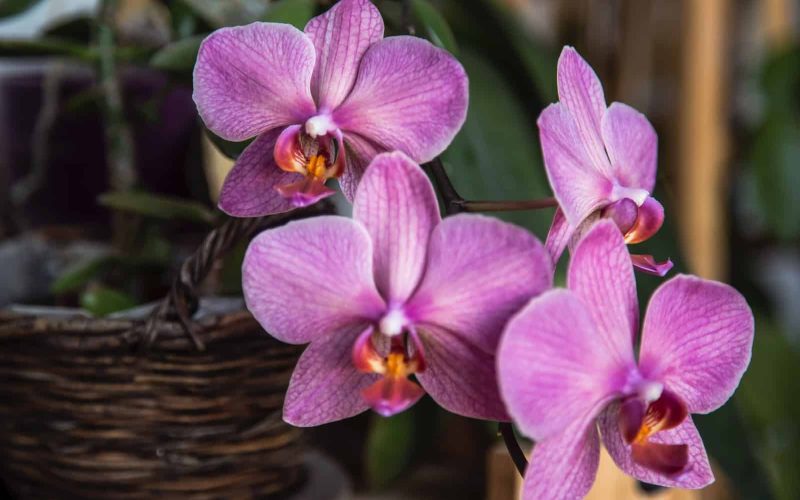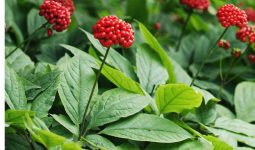Knowing which alternatives are regarded as pet friendly indoor plants is important for pet owners who are enthusiastic gardeners.
Pet friendly indoor plants should be used since pets may eat your potted plant out of curiosity or mischief.
Naturally, you’ll want to keep your indoor plants out of your pets’ usual reach to protect the plants and the pets.
However, you may feel more at ease if your pet ingests the leaves or roots of a potted plant by making sure you avoid poisonous plants.
Check out these lovely pet friendly indoor plants below.
1. Prayer Plant
The prayer plant has a peculiar habit of folding its leaves every night to resemble hands folded in prayer.
Given its tropical foliage and lack of poisonous effects on animals, it is a common option for pet friendly indoor plants.
Although it does well in a variety of lighting conditions, bright, indirect light is what it favors. It may also grow in environments with low to moderate light.
This plant does not tolerate poor watering. The earth’s surface should feel dry to the touch, but fully dried-out dirt is bad news for this plant. Add water to avoid issues as soon as the top layer is dry.
2. Moth Orchid
Pets are unaffected by the common moth orchid, which you will most likely find at a flower store.
However, one thing to be wary of is that your pets may cause difficulty in the potting mix, which often contains bark chips.
Although not poisonous, eating the chips might upset your stomach.
This pet friendly indoor plant, which typically grows between one and three feet tall, can handle low, medium, or strong light and requires water once or every other week.
3. African Violets
One of the most popular pet friendly indoor plants is the African violet (Saintpaulia).
They are also in demand because they grow in environments people want, such as moderate temperatures and medium humidity, and bloom in low light.
Use a balanced fertilizer and a potting mix free of sand for the healthiest African violets.
Although the plant’s leaves and flowers are safe for pets to eat, the fertilizer you chose will be absorbed by the plant and might be harmful if your pet eats any of it.
Find a non-toxic or natural fertilizer for your African violets if your pet has a history of devouring your indoor plants.
4. Banana Tree
Musa spp., a huge pet friendly banana tree, may reach heights of 6 feet or more and makes a striking accent plant; however, dwarf varieties usually reach just 2 to 4 feet.
In tropical cuisine, a central stem divides into long, broad leaves frequently used to cook or serve meals.
It’s not a big surprise to learn that the ASPCA recognizes this plant as non-toxic, making it one of the safest pet friendly indoor plants. It is safe enough to serve as food.
For this tropical houseplant to flourish, the environment must resemble its native habitat. You must provide the banana tree with excellent soil, strong sunshine, and consistent watering.
Additionally, while pets may sometimes eat bananas, don’t depend on your banana tree to provide them with any, as indoor plants rarely bear fruit.
5. Burro’s Tail
Since they are native to the arid heat of Honduras and Mexico, burro’s tail succulents like sunshine and direct sunlight.
As it grows, the delicate blue-grey stems will trail over the edge of the container and reach a maximum length of 23 inches (60 cm).
This plant may lure curious pets to examine, but it won’t hurt them if they do. Keep them away from strong, direct light, potted in compost that drains well and at a high or low altitude.
Since they often store reserves in their leaves, they may survive for extended periods without water.
Knowing that the stems are fragile and readily snap off is important. If they do, repot them and plant fresh plants to make the most of them. This is one of the best pet friendly indoor plants.
6. Gloxinia
Gloxinia hybrids are small, flowering, and pet friendly indoor plants that grow to a height of 6 to 10 inches.
The potted plant is small enough to serve as a table centerpiece or to fit on a windowsill.
Whatever spot you choose, remember that this plant prefers low light and should be maintained away from harsh, direct sunlight.
It has to be watered often, and the soil must be kept wet throughout the growing season. Eventually, the petals and leaves will fall off.
Gloxinia is a great option if you’re searching for one of the best pet friendly indoor plants.
The single or double flowers often come in shades of white, red, pink, lavender, purple, or blue, and the thick, ruffled leaves are non-toxic to pets.
The form and color of the flowers vary greatly since Sinningia speciosa hybrids make up most of these plants.
The plants have a bloom cycle followed by a dormant stage and are widely offered as presents.
7. Christmas Cactus
Christmas cactus are harmless plants that are safe to keep around curious pets, unlike their hazardous seasonal counterpart, amaryllis.
Although Christmas cactus may cause intestinal discomfort if eaten, you shouldn’t allow your pets to chew on them; it’s still a safer option than many other festive plants.
Thanksgiving and Christmas cactus are similar in appearance and need comparable maintenance; however, Thanksgiving cactus are safer for pets.
Both cactus maintain a low height (under 12 inches) but may spread to a maximum of two feet. They thrive in bright indirect light and frequent irrigation.
8. Ponytail Palm
This is among the attractive and pet friendly indoor plants; however, you may not immediately recognize it.
This water-saving sculpture is perfect for those who are disorganized about their watering schedule or spend much time away from home.
Its bulbous trunk retains water. The fountain-like, fine-leafed green leaves that resemble fine green hair that arise from the top of the stem give the sculptural form movement and gentleness.
Thankfully, these almost indestructible, low-maintenance indoor plants have returned in style. The same plant may survive for many years since it is very durable.
In the wild, they may grow as tall as 20 feet (6 meters), but inside, they can reach 3 feet (90 centimeters).
They are native to Mexico and need free-draining compost in a dry, light location away from the sun.
Water them every three to four weeks when the top few inches of compost are dry. Never leave them sitting in water, as they will rapidly decay.
9. Echeveria
Given that it’s non-toxic, this type of succulent is a good option if you have pets.
The echeveria plant produces plump rosettes with colors ranging from greenish-silver to blue-green or even purple.
While you won’t need to keep an eye on this indoor houseplant like other succulents, you should put it somewhere that receives at least 4 to 6 hours of direct sunlight daily.
Water once or twice a week or when the soil is fully dry. This plant doesn’t perform well with prolonged droughts but will also suffer from overwatering.
10. Spider Plant
Given its foliage cascades, spider plants are an ideal choice for elevated areas such as windowsills, floating shelves, or hanging baskets, as long as they don’t get too much light.
It also goes by the names ribbon plant or airplane plant. This hardy houseplant is non-toxic to pets.
The spider plant may thrive in various soil, moisture, and light conditions. Put it in a pot with loose, loamy soil and water it often.
The spider plant loves shade since complete shadow may restrict development, and too much light can burn the leaves.
The spider plant got its popular name because it sent forth branches that produced baby plants as it grew.
11. Haworthia
Haworthia is a non-toxic, slow-growing succulent that requires little maintenance.
Plants are 3 to 5 inches tall when fully grown and have offsets and rosettes of fleshy green leaves with white warts or bands.
Haworthia clusters may be divided to increase the number of houseplants in your collection; these container plants typically need repotting every two to three years.
The whole genus Haworthia, which includes many plants that resemble aloe, is safe for pets.
Your haworthia should ideally be kept in bright light and water every week during the summer and less often during the winter.
It can also survive in moderate-to-low light environments, but the plant isn’t getting enough light if the leaves lose their green color.
12. Bromeliad
Bromeliad plants (members of the Bromeliaceae family) are favored indoor plants due to their hardy, strappy leaves and intriguing cone-shaped flowers.
These pet friendly indoor plants need a bright window and a humid climate, making them simple to care for.
Your choice of bromeliad will determine its look and particular care requirements; several types develop as soil-free epiphytes affixed to the wood. They may be glued or tied to the log to keep them in place.
If your pet has a habit of digging in your potted plants or knocking them over, a soil-free houseplant like a bromeliad removes the possibility of a dirt disaster.
This is one of the best pet friendly indoor plants.








